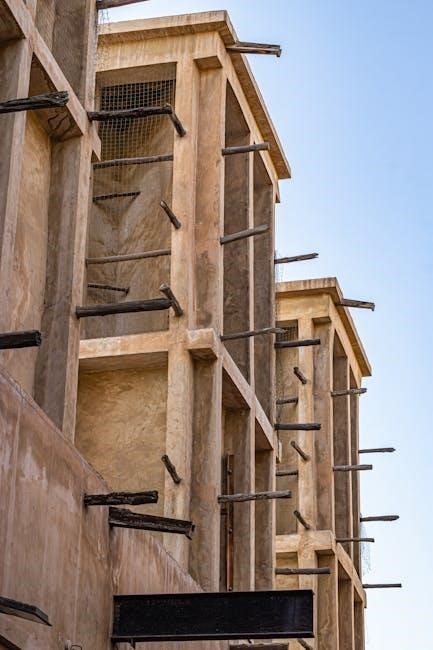krias shema al hamita pdf
- by zachery

Krias Shema Al Hamita is a meaningful Jewish ritual involving reciting the Shema prayer before sleep. It offers divine protection and fosters spiritual connection, influencing dreams and daily life.

Overview of the Practice
Krias Shema Al Hamita is a meaningful Jewish ritual practiced before sleep, involving the recitation of the Shema prayer. This practice is rooted in the belief that it provides divine protection during the night and fosters a spiritual connection. It is considered a rabbinic obligation, emphasizing the importance of ending the day with words of Torah. The ritual typically includes reciting the Shema and the blessing of Birchat Hamapil, which seeks protection and blessings for the night. Many communities have specific customs, while others may vary in their approach. This practice is widely observed across Jewish traditions, highlighting its significance in daily life.
Importance of Reciting Shema Before Sleep
Reciting Shema before sleep is a vital Jewish practice that offers divine protection throughout the night. It is believed to shield against harmful forces and foster a spiritual connection. This ritual, rooted in Torah teachings, emphasizes ending the day with sacred words. The Shema serves as a declaration of faith, reinforcing one’s commitment to divine sovereignty. By reciting it, individuals align their actions with divine will, seeking blessings and protection. This practice is also thought to influence dreams positively and prepare the soul for the spiritual work of the night. Its observance is a meaningful way to integrate faith into daily life, ensuring a restful and protected sleep.

The Structure of Krias Shema Al Hamita
Krias Shema Al Hamita involves reciting three paragraphs of Shema, with the first paragraph and Birchat Hamapil being the minimum requirement. If one might fall asleep, Birchat Hamapil is said first.
The Three Paragraphs of Shema
The Shema consists of three key paragraphs: the first from Deuteronomy 6:4-9, the second from Deuteronomy 11:13-21, and the third from Numbers 15:37-41. The first paragraph emphasizes belief in one God and the obligation to follow His commandments. The second paragraph discusses the rewards for fulfilling the commandments and the consequences of neglecting them. The third paragraph focuses on the mitzvah of wearing tzitzit and remembering the Exodus from Egypt. Together, these paragraphs form the core of the Shema, reinforcing faith, obedience, and remembrance of divine providence. Reciting them at night strengthens spiritual connection and ensures divine protection during sleep.

Minimum Requirements for Recitation
The minimum requirement for reciting Krias Shema Al Hamita is to say the first paragraph of the Shema and then recite Birchat Hamapil. This ensures one fulfills the mitzvah of divine protection during sleep. If one fears falling asleep while reciting, Birchat Hamapil can be said first, followed by the Shema. The Sephardic custom is to recite Birchat Hamapil before the Shema. Even in rushed situations, these core elements must be included to maintain the integrity of the practice. This approach balances convenience with adherence to tradition, ensuring spiritual protection and connection throughout the night.
Customs and Variations
Customs vary across communities, with Sephardic minhag emphasizing Birchat Hamapil before Shema. Other traditions include additional prayers, while Torah scholars may follow unique practices.
Sephardic Minhag and Its Practices
The Sephardic tradition places significant emphasis on reciting Birchat Hamapil before Krias Shema Al Hamita. This practice is rooted in ensuring a seamless transition into sleep with divine blessings. According to Sephardic customs, it is preferable to recite the entire Shema, but the minimal requirement is the first paragraph followed by Birchat Hamapil. If one fears falling asleep during the recitation, Birchat Hamapil is said first. This approach underscores the importance of seeking protection and blessings before rest, aligning with the broader Jewish values of integrating faith into daily life.

Role of Birchat Hamapil in the Ritual
Birchat Hamapil holds a central role in the Krias Shema Al Hamita ritual, serving as a prayer for protection and peace during sleep. It is typically recited immediately before retiring, often following the Shema. The blessing seeks divine safeguarding from harmful forces and expresses gratitude for the gift of rest. According to some customs, if one fears falling asleep during the Shema, Birchat Hamapil is recited first to ensure its completion. This prayer enhances the spiritual dimension of sleep, connecting it to faith and trust in divine providence, thereby enriching the overall ritual experience.

Benefits and Significance
Krias Shema Al Hamita provides divine protection during sleep and positively influences dreams and daily life, fostering a deeper spiritual connection and trust in divine providence.
Divine Protection During the Night
Krias Shema Al Hamita is believed to provide divine protection during sleep, shielding against harmful forces. The recitation of Shema acts as a spiritual shield, offering safety and peace. According to the Gemara and Rashi, this practice ensures one is surrounded by divine grace throughout the night. Torah scholars, immersed in constant study, may be exempt, as their learning serves as protection. The prayer’s words, rooted in faith, create a protective barrier, emphasizing trust in God’s providence. This ritual fosters a sense of security and connection to the divine, making it a vital part of nightly observance.
Influence on Dreams and Daily Life

Reciting Krias Shema Al Hamita before sleep is believed to positively influence both dreams and daily life. The spiritual act fosters a deeper connection to faith, promoting peaceful sleep and inspiring uplifting dreams. By focusing on divine words, individuals cultivate a mindset of gratitude and clarity, which carries over into their waking lives. This practice is thought to enhance emotional well-being, guiding actions and decisions with heightened moral awareness. Many find that this ritual provides a sense of purpose and positivity, shaping their daily interactions and fostering a stronger bond with their spiritual heritage. It serves as a bridge between rest and renewal.
Practical Guide to Recitation
Recite Krias Shema Al Hamita after sunset, ideally before midnight. Preferably, say all three paragraphs, but at least the first and Birchat Hamapil. If sleepy, say Birchat Hamapil first.
When to Recite Krias Shema Al Hamita
Krias Shema Al Hamita should be recited after sunset, preferably before midnight, to align with the evening period. If one feels overly sleepy, Birchat Hamapil may be recited first, followed by Shema. Ideally, all three paragraphs are recited, but the first paragraph and the blessing are sufficient. The practice ensures divine protection throughout the night and fosters spiritual mindfulness. It is not necessary to recite it if one stays awake studying Torah, as learning itself serves as a form of protection and connection. Consistency in timing enhances the ritual’s effectiveness and meaningfulness in daily life.
Proper Recitation Techniques
Proper recitation of Krias Shema Al Hamita requires attention and intention. One should face the bed, ensuring the words are spoken clearly and with focus. Proper pronunciation and understanding of the text are essential. It is advised to avoid rushing through the recitation to maintain its sanctity and effectiveness. The ritual should be performed with a calm and reverent demeanor, fostering a deep connection to the divine. These techniques enhance the spiritual benefits, providing protection and fostering mindfulness before sleep. Consistency in method ensures the practice remains meaningful and impactful in one’s daily spiritual routine.

Historical and Talmudic Perspectives
Krias Shema Al Hamita traces its roots to Talmudic discussions, emphasizing the importance of reciting Shema before sleep for divine protection and spiritual connection, as highlighted in rabbinic texts.
References in Gemara and Rashi
The Gemara and Rashi emphasize the significance of Krias Shema Al Hamita, highlighting its roots in Talmudic teachings. The Gemara (Brachot 4b) discusses the practice, noting that reciting Shema before sleep provides divine protection. Rashi explains that this ritual ensures one transitions into sleep surrounded by words of Torah, fostering a spiritual connection. The Gemara also mentions exemptions for Torah scholars, as their constant study serves as a form of protection. These references underscore the ritual’s importance, linking it to ancient traditions and reinforcing its role in Jewish practice for divine safeguarding during the night.
Exemptions for Torah Scholars
Torah scholars are exempt from reciting Krias Shema Al Hamita due to their constant engagement with Torah study. The Gemara (Brachot 4b) and Rashi explain that their ongoing learning serves as a form of divine protection. Since they are immersed in Torah throughout the day, their sleep is already safeguarded. This exemption reflects the idea that their scholarly dedication inherently provides the spiritual protection intended by the ritual. Thus, while others recite Shema to ensure safety during the night, Torah scholars are considered to already fulfill this requirement through their studies.

Krias Shema Al Hamita is a vital Jewish practice, offering divine protection and spiritual enrichment. Reciting Shema before sleep fosters a connection to faith, ensuring safety and blessings throughout the night.
Final Thoughts on the Practice
Krias Shema Al Hamita is a profound ritual that embodies Jewish faith and tradition. By reciting Shema before sleep, individuals seek divine protection and spiritual growth. This practice, rooted in Torah teachings, emphasizes the importance of ending the day with sacred words. It not only safeguards against harm but also nurtures a deeper connection to one’s faith. Adhering to its guidelines, such as reciting all three paragraphs and including Birchat Hamapil, enhances its significance. Embracing this custom fosters mindfulness and tranquility, making it a cherished part of daily life for many. Its enduring relevance continues to inspire spiritual fulfillment and devotion.
Related posts:
Access the Krias Shema Al Hamita PDF instantly. Download the sacred Jewish text for free now.
Posted in PDF
Recent Comments
Archives
- December 2025
- November 2025
- October 2025
- September 2025
- August 2025
- July 2025
- June 2025
- May 2025
- April 2025
- March 2025
- February 2025
- January 2025
- December 2024
- November 2024
- October 2024
- September 2024
- August 2024
- July 2024
- June 2024
- May 2024
- April 2024
- March 2024
- February 2024
- January 2024
- December 2023
- November 2023
- October 2023
- September 2023
- August 2023
- July 2023
- June 2023
- May 2023